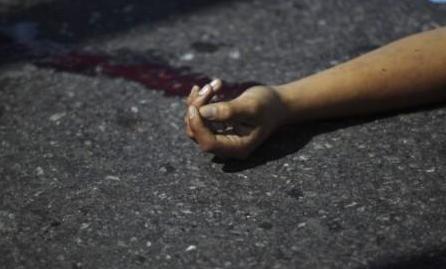A transgender person was killed and two others were injured in India’s Hyderabad city. Observers say it is the latest in a series of mob lynching provoked and egged on by fake videos about child traffickers and robbers.
Here, an irate mob thrashed a transgender to death after they mistook him for a child-lifter. The person was attacked due to fake WhatsApp messages, which said that a dacoit gang was on the prowl to kidnap children in Hyderabad.
The incident took place in Chandrayanagutta of the old city.
The deceased transgender, who has been identified as 52-year-old Chandraiah, his transgender son, a 25-year-old Ravi, and another male friend Narasimha had come to Hyderabad to collect alms during the month of Ramzan. The two transgenders and Narasimha, who are natives of Mahboobnagar district, were begging in hotels near Naseeb Nagar at around 11:45 pm, when locals mistook them for kidnappers.
The heated argument soon took a violent turn and a mob of around 500 people started thrashing them. Narasimha tried to rescue his friends and also suffered injuries.
The violent mob also pelted stones at the police, when they attempted to rescue the victims. The three victims were later taken to Osmania General Hospital, where Chandraiah died of her injuries at around 3 am on Sunday (May 27).
The Police on May 29 arrested 14 people in connection with the attack, including two local reporters, for allegedly circulating fake news.
A few days ago, an auto driver Balakrishna was lynched by locals in Bibinagar over fake WhatsApp messages and videos, wherein the public has been asked to stay alert as the gangs from Sri Lanka and Tamil Nadu were kidnapping children.
There were two killings by frenzied mobs in the second half of May. These were also attributed to a widely circulated video and a message claiming that a notorious kidnapping and burglary gang was prowling Hyderabad.
Fact-checking groups have confirmed that the video was more than a year old but had been resurfacing periodically. Police later tweeted asking people not to share such bogus reports.”It is all fake,” said the tweet.
Many fake messages are spread via social media, mainly WhatsApp. Fake messages and doctored ‘news’ video clips are tearing apart the fabric of Indian society, even as mobile communication becomes more accessible to the masses. This means more than 300 million Indians now have an internet connection
There has been an alarming increase of fake messages and news — leading to attacks, communal clashes and mob lynching — as more ordinary Indians, the majority of whom are neolitrates or with no higher than secondary level education — connect to the internet and become active on social media.
Cases of mob lynchings connected with fake news have been reported across India.
In May 2017, in Jharkhand state, seven people were lynched in two separate incidents after unverified messages about child kidnappers sparked communal tensions. The dead included innocent cattle herders who were attacked as suspected kidnappers.
In January 2018, following the rape and murder of an 8-year-old girl in Jammu and Kashmir state, emotions were fueled when a video of the girl purportedly singing went viral. Later, fact-checking groups proved that the video was fake and had been made a year earlier.
“It is clear that people use social media to create communal tension and hatred,” said Govindraj Ethiraj, founder of FactChecker.in, India’s first dedicated initiative to check data and information available on public platforms. “It is often a political game.” He said the spread of misinformation could be intentional or unintentional, but the outcome was often detrimental.
While the Bharatiya Janta Party (BJP), and affiliated organizations, have been accused by political rivals of using fake content to gain electoral advantage, the BJP accuses these critics of doing likewise.
In April, Facebook partnered with Boom, a local fact-checking team, in an attempt to prevent the spread of fake news in the lead-up to a state election in southern Karnataka state.
In the days leading to the 2014 general election in India, a doctored photo of current Prime Minister Narendra Modi sweeping with a broom was widely circulated. It was an attempt to boost Modi’s narrative of having humble beginnings. Although fact-checking groups intervene to counter fake contents, the sheer volume of fake content, spread through encrypted services such as WhatsApp, poses a major challenge.
“Fake news is a global issue but only in India is it leading to violence,” said Ethiraj, who added that blaming social media alone was futile. “The real issue is the break-down of law and order. It is a deeper societal problem.”
Ethiraj believes authorities should react to the problem with the seriousness of bracing for a natural calamity.
He welcomed the awareness of Hyderabad police as demonstrated by their response to the recent lynching incidents.
The victims of fake news are almost always the poor, observed Father Alwyn Prakash D’Souza, head of the human rights and training unit at the Jesuit-run India Social Institute in Bangalore.
“It is the marginal communities, especially Dalits and minority religious groups, who are affected the most,” he said. He noted that villagers could be easily influenced by messages they received as people tended to believe what they read.
Most often fake news falsely quoted officials or was presented as something that had appeared in international media outlets, Father D’Souza said.




Social media is being made an instrument of evil by sinister forces who want to destroy the fabric of civil society.
Let you and I resolve never to pass on violent videos or videos designed to provoke anger and frustration.